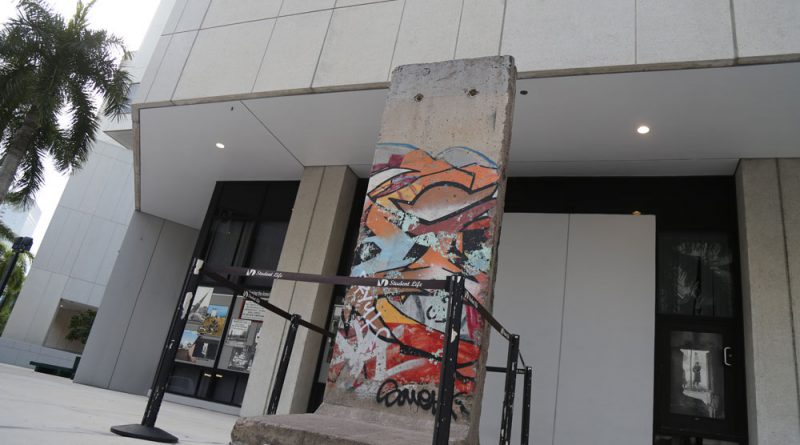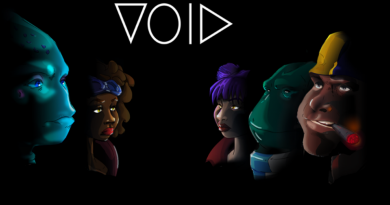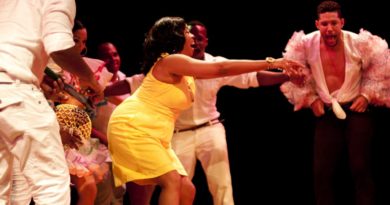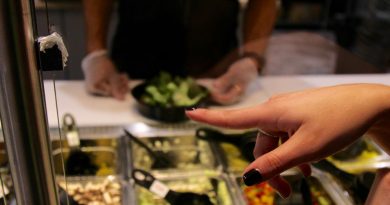M.A.G.I.C. Students Create Berlin Wall App
A 12-foot-tall, 3-foot-wide section of the Berlin Wall sits at Wolfson Campus surrounded by panels that explain post-World War II history.
The artifact, given to the College in 2014, is located at the corner of N.E. 3rd St. and 2nd Ave. by building one. It’s a glimpse into the lives of Germany’s citizens during the Cold War—when the wall divided East and West Berlin from democracy and communism.
Now, thanks to, students from the Miami Animation and Gaming International Complex, who created the Berlin Wall Presented by MAGIC virtual reality app, visitors can travel through Cold War history using imagery, text and audio narratives. It was launched on May 9 in celebration of the wall’s demolition thirty years ago.
“The app was designed for all in the community,” said Mauricio Ferraza, department chairperson of M.A.G.I.C. “In order to trigger the simulation the user needs to aim the camera on the mobile phone at the actual piece of the Berlin Wall placed at Wolfson Campus.”
It begins in August of 1961, when construction of the 140-kilometer wall began during the aftermath of World War II, continues in 1987 with former U.S. President Ronald Reagan urging former General Secretary of the Communist Party of the Soviet Union Mikhail Gorbachev to “tear down this wall” and concludes with the launch of Berlin’s Holocaust Memorial in 1990.
Users can navigate through the app by clicking on different historical checkpoints, which leads them to select sites in the wall’s history. The idea was born last August when M.A.G.I.C.’s faculty and staff looked to create a capstone project that made an impact on the community.
M.A.G.I.C.’s animation studio 1 and game project 1 classes spent the fall and spring semesters of the 2018-19 school year developing the app. It was facilitated by animation professor Daniel Coes and gaming professor Alvaro Sanint. Thirty-five students were involved in the making of the project.
Animation students laid the groundwork by creating detailed, realistic animation models of the characters and scenes depicted in the app. Gaming students then made the app a reality by developing the coding and simulation layout.
“I wasn’t too sure of myself as a developer. I didn’t see myself as a good programmer by any means,” said Oliver Simkovsky, a 20-year-old student studying gaming development. “I’m still learning and getting better every day. This project specifically was a huge learning curve for me.”
Students often dedicated 40 hours a week to developing the app.
“There were some nights where I would stay up until six in the morning while working on the app,” Simkovsky said.
They hit road bumps along the way. This past January, the students decided to start over after realizing the app’s vision had strayed.
“We had too many fictional characters,” Simkovsky said. “We needed to add more realistic effects.”
The group spent a day brainstorming ideas before moving on. They researched the history of the wall in collaboration with the Consulate General of the Federal Republic of Germany, who provided post-World War II textbooks so students could accurately depict the wall’s history.
“The German Consulate was honestly very helpful throughout the whole process,” Simkovsky said. “They were very supportive.”
The app is the first virtual reality simulation app created by M.A.G.I.C.
The app is available to download on Google Play at play.google.com/store/apps/details?id=com.GameDevClass.Berlin_UnityClean.




